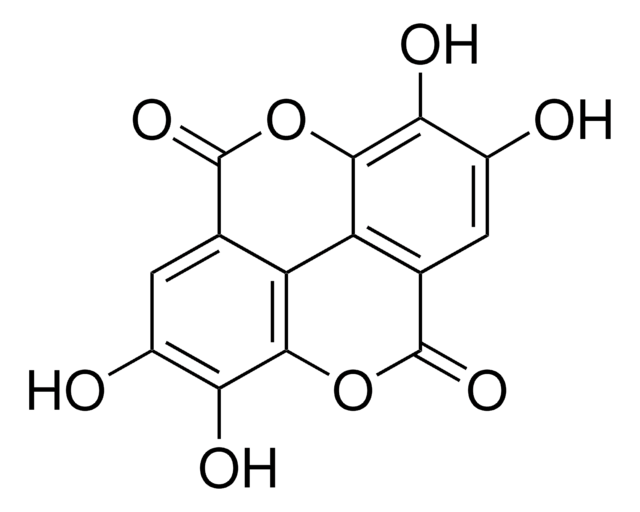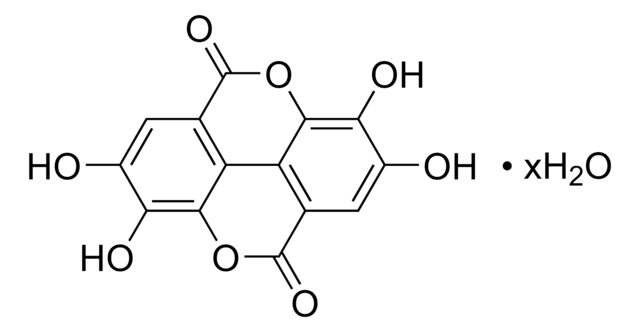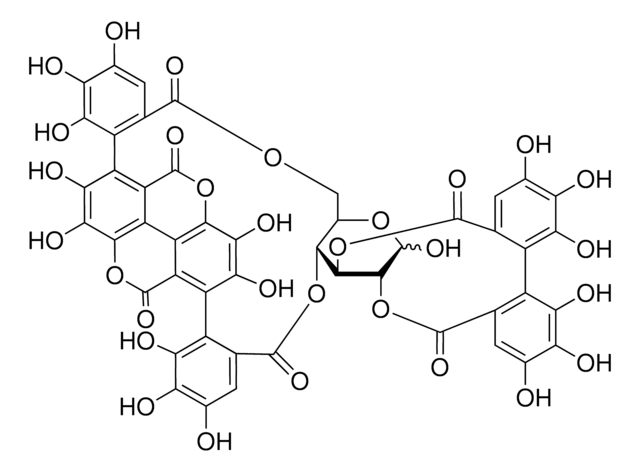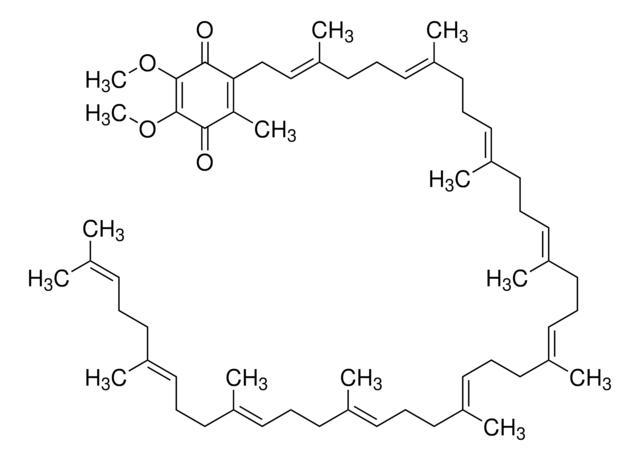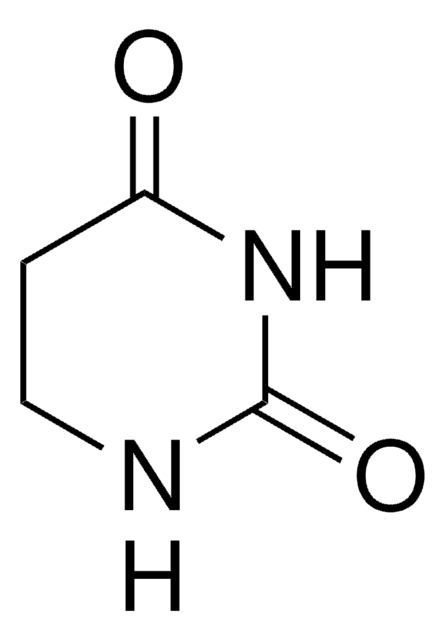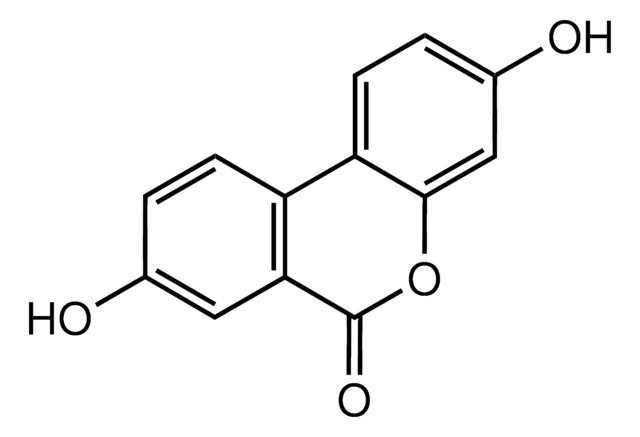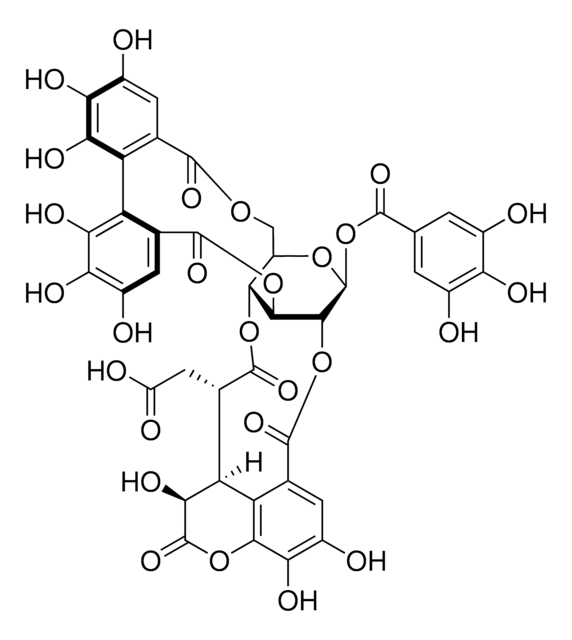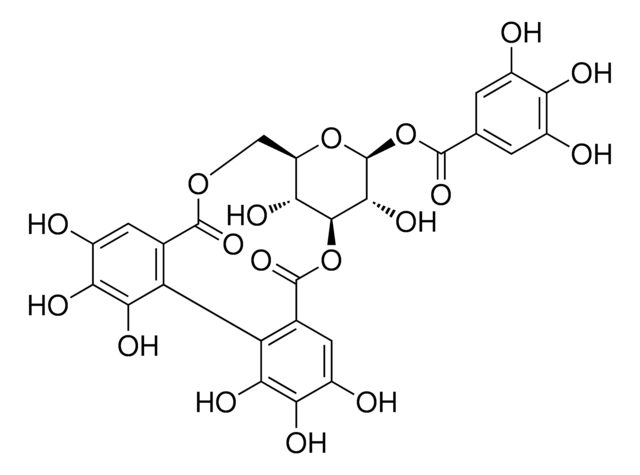E2250
Ellagic acid
≥95% (HPLC), powder, from tree bark
Synonym(s):
4,4′,5,5′,6,6′-Hexahydroxydiphenic acid 2,6,2′,6′-dilactone, Alizarin Yellow, Benzoaric acid, Elagostasine, Eleagic acid, Gallogen, Lagistase
About This Item
Recommended Products
biological source
tree bark
Quality Level
Assay
≥95% (HPLC)
form
powder
shelf life
5 yr
solubility
1 M NaOH: 10 mg/mL
application(s)
metabolomics
vitamins, nutraceuticals, and natural products
SMILES string
Oc1cc2C(=O)Oc3c(O)c(O)cc4C(=O)Oc(c1O)c2-c34
InChI
1S/C14H6O8/c15-5-1-3-7-8-4(14(20)22-11(7)9(5)17)2-6(16)10(18)12(8)21-13(3)19/h1-2,15-18H
InChI key
AFSDNFLWKVMVRB-UHFFFAOYSA-N
Gene Information
human ... CSK(1445) , DYRK1A(1859) , GSK3B(2932) , SRC(6714)
rat ... Lyn(81515) , Syk(25155)
Looking for similar products? Visit Product Comparison Guide
General description
Application
- to study the metabolism of dietary phenolic acids by Lactobacillus plantarum CECT 748T
- as a potential substrate for the high production of Lactobacillus plantarum tannase
- as a standard in the study to examine the phenolic components and anti-oxidant activity of nettle
- to study the links between dietary ellagic acid and epigenetic modulation of adipogenesis
Biochem/physiol Actions
Storage Class Code
11 - Combustible Solids
WGK
WGK 1
Flash Point(F)
Not applicable
Flash Point(C)
Not applicable
Personal Protective Equipment
Choose from one of the most recent versions:
Already Own This Product?
Find documentation for the products that you have recently purchased in the Document Library.
Customers Also Viewed
Related Content
DISCOVER Bioactive Small Molecules for Nitric Oxide & Cell Stress Research
Our team of scientists has experience in all areas of research including Life Science, Material Science, Chemical Synthesis, Chromatography, Analytical and many others.
Contact Technical Service